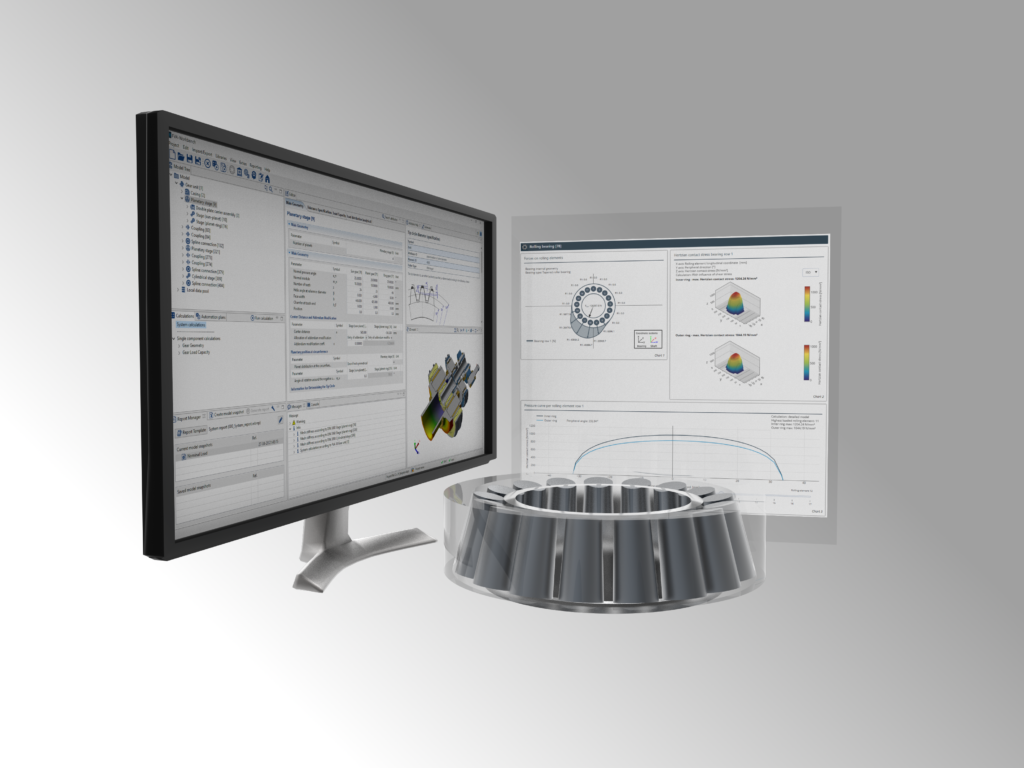
Rolling bearings are indispensable in all fields of mechanical engineering, enabling precise, low-friction and cost-effective solutions for rotating components. The standard for calculating bearing service life is ISO/TS 16281, which assumes an ideal raceway geometry with perfect alignment – a theoretical scenario that is rarely seen in practice. In reality, geometric deviations from manufacturing and assembly are expressed as a static distribution. Furthermore, the loads can cause deformations during operation, which influence the operating behavior of the bearings.
Reliable calculation of bearing service life
The consideration of deviations and their statically distributed characteristics in rolling bearing calculations leads to a more accurate representation and more reliable results. The FVA-Workbench software enables engineers to account for these geometric deviations in their rolling bearing designs. The software’s advanced features, including a JavaScript-based scripting interface, can be used to integrate and tailor user-defined routines, further enhancing the precision and flexibility of the calculations.
Effortless bearing design
The FVA-Workbench design software streamlines the modeling, configuration and calculation of transmission systems. With a simple and intuitive workflow, engineers can import complex CAD files for elements such as casings and effortlessly couple them with the bearing outer ring to model the entire system accurately. In addition to using bearing data according to manufacturer specifications (such as from rolling bearing catalogs), the rolling bearing geometry can also be directly specified, including the profiling of the rolling elements and raceways. Both rolling bearing catalogs as well as proprietary bearing specifications can provide data to determine the influence of geometric deviations on service life.
Easily define and vary tolerances
The first step is to determine which tolerances are to be investigated and within which limits. Deviations on the outer ring raceway can be defined as radial deviations from the ideal circular form. For example, this can be used to define ovalization of the outer bearing ring. Form and geometrical tolerances in the bearing seat can also be considered. In the next step, the tolerances can be easily varied to simulate their individual influences on the service life.
The easiest way to do this is by using the FVA-Workbench’s integrated scripting feature – a powerful tool that enables users to execute complex stack operations with just a few mouse clicks via intuitive text instructions. The result is a meticulous statistical analysis of the tolerances, dynamically varied within the specified tolerance ranges.
The influence of geometric deviations on the service life
Geometric deviations of the bearing raceways have a significant influence on the service life. In testing, we have observed that certain combinations can even triple the calculated service life. On the other hand, unfavorable tolerance combinations can reduce the bearing life to 1/3 of the original value. Among other factors, the roundness of the bearing seat relative to the main force direction is decisive for achieving the desired service life. In practice, this can be a result of deformation of the bearing rings during mounting due to bearing seat geometries that are not ideally cylindrical. The effect depends on the bearing type and size as well as the operating conditions. The FVA-Workbench provides a solution to account for geometric deviations within the bearing design phase, making it possible to achieve reliable results on the service life of bearings.
